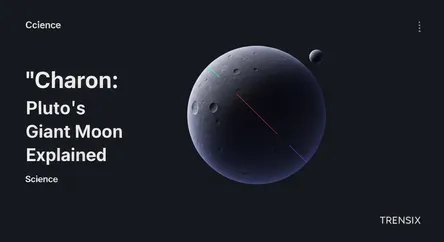Science
Charon: Pluto's Giant Moon Explained

Discover Charon, Pluto's largest moon. Learn about its unique binary system, mysterious red pole, and the stunning revelations from NASA's New Horizons.
What is it?
Charon is the largest of Pluto's five moons and a truly unique celestial body. Discovered in 1978, it is so massive in comparison to Pluto—about half its diameter—that the two are often considered a binary system, orbiting a common point in space outside of Pluto itself. This means they are tidally locked, with the same side of Charon always facing the same side of Pluto. Its surface is primarily composed of water ice, distinct from Pluto's nitrogen-ice-dominated landscape, and features vast canyons and a surprisingly complex geology for such a distant, frozen world.
Why is it trending?
Interest in Charon surged following the 2015 flyby of NASA's New Horizons spacecraft, which provided the first-ever high-resolution images of its surface. These images revealed a world far more dynamic than expected, with towering mountains, deep chasms, and a mysterious reddish-brown polar cap nicknamed "Mordor Macula." Scientists are still analyzing the data to understand the geological forces that shaped Charon and the chemical processes that created its colored pole, keeping it a hot topic in planetary science.
How does it affect people?
The study of Charon doesn't impact daily life, but it profoundly reshapes our understanding of the outer solar system. It challenges old theories about how small, icy worlds form and evolve, proving they can have active and complex histories. For the public, Charon represents the thrill of exploration and discovery, reminding us that our solar system is filled with strange and wonderful places still waiting to be fully understood. It inspires a new generation of scientists and fuels our collective curiosity about the cosmos.